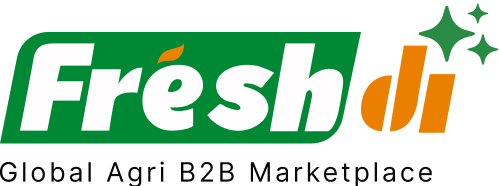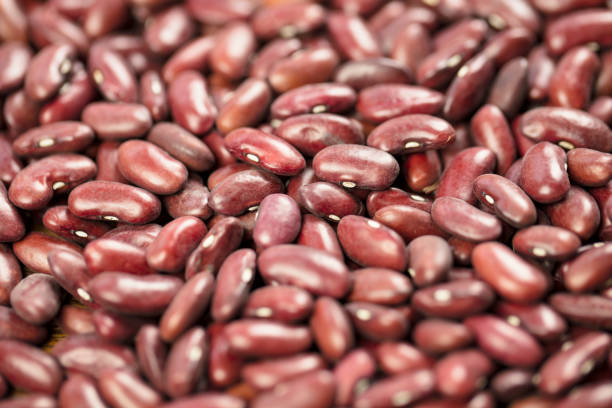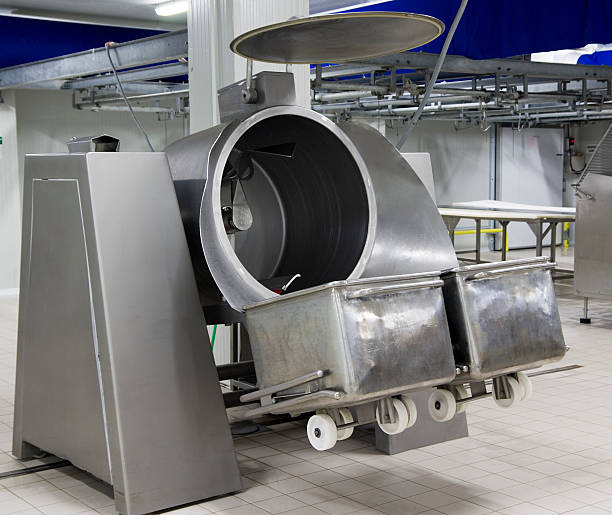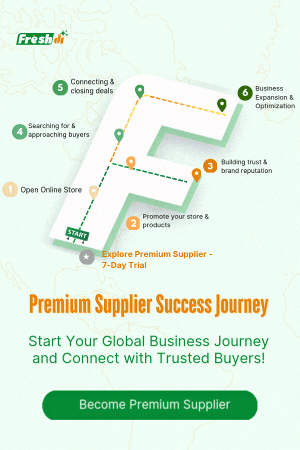Introduction – Delving into Philippines’s Reputation for Quality Kidney Beans
If you’re looking to source top-tier kidney beans, the Philippines might not be the first country that comes to mind—but it should be. Thanks to its tropical climate, fertile volcanic soil, and a growing focus on agricultural excellence, the Philippines is becoming a noteworthy hub for high-quality kidney beans in Southeast Asia.
Why does this matter to you as a buyer or business? Because understanding what makes kidney beans from the Philippines stand out—whether it’s purity, moisture control, or traceability—can make all the difference in your sourcing strategy. And when you’re dealing with global standards and competitive markets, quality isn’t just a bonus—it’s a must.
Defining & Verifying Kidney Beans Excellence in Philippines
Let’s break down what “premium quality” really means when it comes to kidney beans in the Philippines.
Key Quality Markers for Kidney Beans
High-quality kidney beans aren’t just about their deep red hue or plump texture. There are strict standards that define excellence:
- Moisture Content: Should not exceed 14% for dried beans.
- Purity: 99.5% free from foreign matter, broken pieces, or off-color beans.
- Defect Levels: Should be below 1%, including wrinkled, moldy, or discolored beans.
These parameters ensure long shelf-life, better taste, and safety for consumers.
Certifications That Matter
To verify these attributes, look for certifications like:
- ISO 22000: Ensures a robust food safety management system.
- HACCP: Covers hazard analysis and critical control points to prevent contamination.
- Organic Certifications: For beans grown without synthetic inputs.
These aren’t just badges—they’re proof of credibility, especially when you’re importing or exporting kidney beans.
Regional Influences on Bean Quality
Different areas in the Philippines produce different bean profiles. Why? Because climate, soil pH, and local farming practices affect everything from bean size to flavor profile. For example, beans grown in cooler, elevated areas may have better yields and richer color.
So, if you’re sourcing from Northern Luzon vs. Mindanao, expect subtle differences.
Freshdi Insight: Quality-Specific RFQs
On platforms like Freshdi, buyers are increasingly posting RFQs (Request for Quotations) that emphasize quality specs—like moisture thresholds, organic status, and even bean size. This indicates a growing demand for traceable, certified produce.
Top 6 Verified Kidney Beans Suppliers in Philippines – Pioneering Quality Standards
Now, let’s get to the good part—the top suppliers making waves in the Philippine kidney beans space. These suppliers have been verified for their consistency, certifications, and positive buyer feedback on sourcing platforms like Freshdi.
1. AG-X PHIL RATTAN TRADING
- Known for offering Light Speckled Kidney Beans with consistent moisture and purity levels.
- Popular among exporters for bulk orders and reliable shipping timelines.
2. Cdaec International Goods Trading
- Specializes in HACCP-compliant dried legumes.
- Offers kidney beans in various grades based on buyer requirements.
3. Jean Leonardo
- A rising supplier focused on organic and traceable kidney beans.
- Known for flexibility in packaging and MOQs (Minimum Order Quantities).
4. Rustom
- Offers red kidney beans sourced from high-altitude farms.
- Frequently featured in Freshdi’s Supplier of the Month rankings.
5. RZJ Trading
- Strong export network across Southeast Asia.
- Known for fast response times and customizable logistics support.
6. Nmc Provita
- Noted for consistent quality and adherence to international food safety protocols.
- Works closely with BAFS guidelines for local compliance.
Bonus Mentions:
O-s-m Dried Food Trading and BRT Global LLC Consumer Goods Trading
- Both suppliers are gaining traction for offering high-quality, export-ready kidney beans with verified certifications.
Dynamic Ranking Note:
Keep in mind that platforms like Freshdi regularly update supplier rankings based on real-time performance, RFQ responsiveness, and buyer feedback. Features like “Supplier of the Month” or “Top Exporter of the Quarter” can guide you to the most active and trusted suppliers at any given time.
Market Navigation – Trends in Quality Demand & Global Consumer Preferences
The global demand for kidney beans is shifting—and fast. What used to be a bulk commodity is now a health-conscious staple, thanks to rising veganism, gluten-free diets, and plant-based protein fads.
Premium Beans Are In
Buyers today want more than just quantity. They’re looking for:
- Organic-certified beans
- Low-moisture content for longer shelf life
- Aesthetic appeal (yes, even beans need to look good on shelves)
And that means suppliers in the Philippines are adapting—fast.
Traceability Is Non-Negotiable
Consumers today want to know: Where did these beans come from? Were they grown ethically?
That’s why traceability tools and digital sourcing platforms like Freshdi are seeing a surge in usage. Buyers now prefer suppliers who can provide batch-level traceability, farming methods, and even soil composition data.
Conclusion – Final Thoughts on Quality Sourcing
Sourcing kidney beans from the Philippines isn’t just about tapping into a growing market. It’s about aligning with a supply chain that values quality, transparency, and adaptability. From strict quality markers to regional bean characteristics and certified suppliers, the Philippines is stepping up as a reliable origin for premium kidney beans.
But the real secret weapon? Using platforms like Freshdi to verify supplier claims, request specific certifications, and monitor supplier rankings in real time. It gives you the control and confidence you need to make smarter sourcing decisions.
Key Takeaways
- The Philippines offers ideal growing conditions for high-quality kidney beans.
- Moisture, purity, and defect levels are key quality markers.
- Certifications like ISO 22000 and HACCP bolster supplier credibility.
- Regional factors affect bean size, flavor, and color.
- Verified suppliers on Freshdi offer traceable, export-ready products.
Sourcing Checklist for Kidney Beans Buyers
✅ Check moisture content (≤14%)
✅ Look for at least 99.5% purity
✅ Verify certifications (ISO 22000, HACCP)
✅ Ask for traceability or origin documentation
✅ Use Freshdi to compare and verify suppliers
✅ Monitor dynamic supplier rankings for updated insights
Future Outlook
As global food standards tighten and consumers demand more transparency, the Philippines is poised to become a premium hub for kidney bean exports. Expect to see more organic certifications, tech-based traceability tools, and climate-smart farming techniques in the coming years.
How Platforms Like Freshdi Empower Buyers
- Verified Profiles: No more guesswork—only verified, quality-focused suppliers.
- RFQ Tools: Tailor your needs and receive quotes that match your exact specs.
- Dynamic Rankings: Stay updated with top-performing suppliers.
- Traceability Support: Get access to supplier data and certification history.
With tools like these, sourcing becomes less of a gamble and more of a strategy.
References
- BAFS – Bureau of Agriculture and Fisheries Standards
- CHHC Wholesales – Dried Red Kidney Beans
- Tradelink International – Red Kidney Beans
- USDA – Dry Beans Research
- World Bank – Philippines Kidney Beans Import Data 2023
FAQs
1. Are kidney beans grown locally in the Philippines or mostly imported?
Both! While the Philippines has growing local production, it still imports a significant volume—about 4.69 million kg in 2023—mainly from Argentina, China, and the U.S.
2. How do I ensure the kidney beans I source are high-quality?
Look for beans with low moisture content, high purity, and certifications like ISO 22000 or HACCP. Platforms like Freshdi let you verify these details easily.
3. Can I request small quantities from these suppliers?
Yes, many suppliers on Freshdi offer flexible MOQs. Just send an RFQ and specify your needs.
4. What makes kidney beans from the Philippines unique?
The tropical climate and volcanic soil contribute to rich color, dense texture, and consistent quality—plus the country’s focus on food safety standards.
5. How often do supplier rankings change on Freshdi?
Supplier rankings are dynamic and updated regularly based on performance metrics, buyer reviews, and completed RFQs. Check back often for the most current info.





